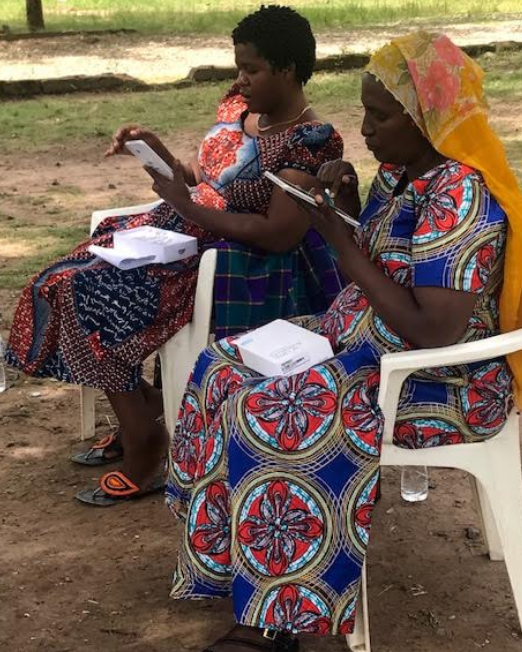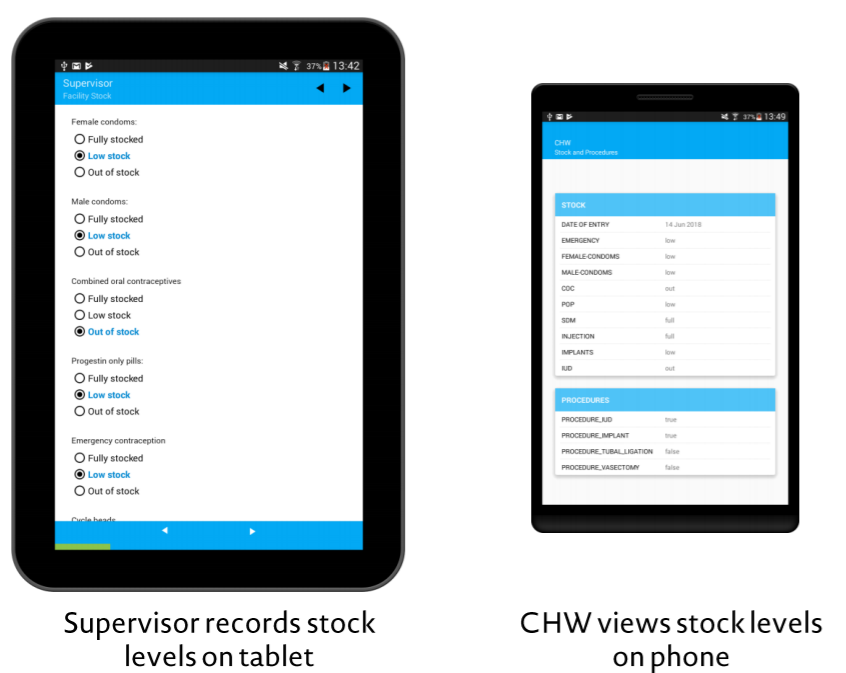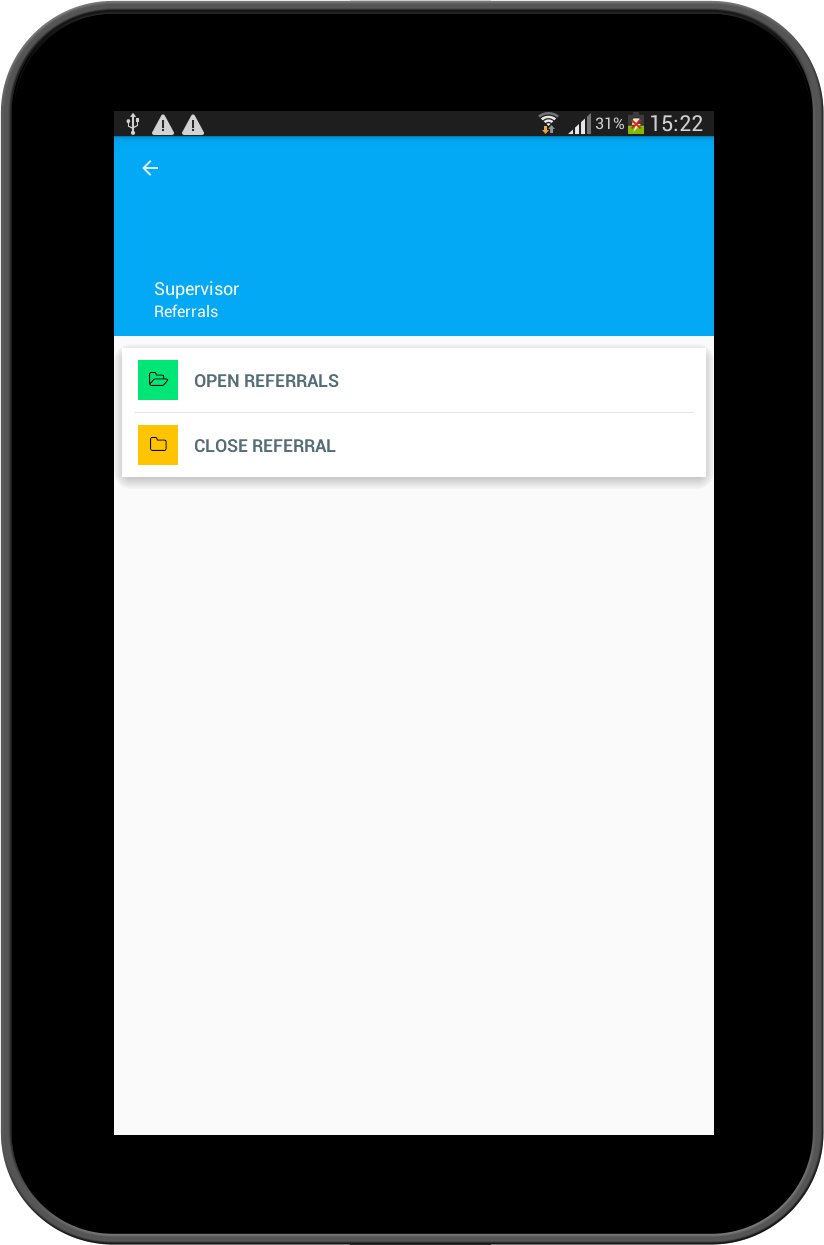The Supervisor’s role in digital community-based Family Planning programs is often considered an afterthought, but we have seen that the role is a key part of the system to facilitate access to family planning methods and continuity between the Community Health Worker counselling the client and supporting referrals and coordination of care with health facilities.
We first implemented a Supervisor role within a Family Planning system in 2014 with Pathfinder International in Shinyanga, Tanzania. We have since implemented the role in various other settings, including again with Pathfinder International this past May in four more regions in Tanzania: Arusha, Manyara, Katavi and Kigoma. Across our family planning programs, we have trained about 500 Community Health Workers and 250 Supervisors, supporting more than 100,000 clients.
In the Shinyanga project, the Supervisor uses a mobile application to document family planning method stock availability at a facility, as well as future outreach events conducted at rural health facilities or in the community. This information is then automatically shared with a Community Health Worker who is able to see the information on a Community Health Worker mobile application. For the recent implementation in May, we enhanced the Supervisor role with a messaging functionality between the Supervisor and Community Health Worker, as well as automated referral closure using QR code technology.
While training and implementing the Family Planning system in May in additional regions in West and North Tanzania, we had the opportunity to talk with some of the Supervisors and Community Health Workers about what they are looking forward to most about the digital solution. Through these discussions, and lessons from past Supervisor programs, we identified three ways in which the Supervisor role is critical to the Family Planning system and Community Health Worker collaboration.
1. Improve communication and coordination between the Community Health Worker and Supervisor with a messaging functionality
Reliable and instantaneous communication between Community Health Workers and their Supervisors is an important prerequisite in strengthening supervisory support for Community Health Workers. Long distances between health facilities and communities served by Community Health Workers can create a support gap between Community Health Workers and supervisors, resulting to health system inefficiencies.

Through the messaging feature, Supervisors can send messages to Community Health Workers and the Community Health Workers can send messages to the Supervisors from very far distances, and therefore allows for better communication between Community Health Workers and Supervisors. This strengthens community health systems by laying a conducive, enabling work environment where Community Health Workers are adequately supported, motivated and empowered by Supervisors. Moreover, since the messaging feature is integrated in the mobile app, the program managers can also send and receive messages to fully support all system users.
Analyses of the message exchanges so far between the two groups, captured on our database, show scenarios that might require a Community Health Worker to communicate with a supervisor. They include but are not limited to:
-
Follow up after an outreach event
-
Information on availability of stock for family planning methods
-
Follow up and clarification about a referral
Prior to the mobile solution intervention, a Community Health Worker had to walk to the health facility to get this kind of information;
“Whenever I wanted to inquire some information from the supervisor, I would have to walk to the health center which is about an hour away. But since I am naturally a social person and I greet everyone I come into contact with, the whole journey would sometimes take me 3 hrs – that is if I am not swayed away along the way”
With the ability to reach out to a supervisor just finger tips away, a Community Health Worker no longer needs to walk for miles to inquire about stock availability and can instead access all important information from their phone.
2. Increase family planning resource availability and communication through stock management functionality
Availability of contraceptives is essential in shaping demand for and regular use of contraception. Contraceptive stock outs during Community Health Worker – Client visits, or at a facility, are connected to low contraception uptake and usage, and we have found that it is of paramount importance for family planning programs to have in place a reliable and adequate supply system.
The stock reporting feature included in the solution allows the Supervisor to report from their tablet, contraceptives stock levels and contraception procedures performed at their health facility, information that is then accessible to Community Health Workers (who refer clients to the health facility) and the program team (responsible for restocking the health facility).

Furthermore, as a way to incentivize the activity, we have developed an integrated pay for performance system for supervisors, which takes into account reporting stock levels on a monthly basis.
3. Enable continuity of care with automated referral closure at a facility
In the Pathfinder program, Community Health Workers can only provide short-term methods to the client during a visit, such as condoms and hormonal contraception such as pills. When clients select any method other than a home based method, they receive a referral, in the form of a referral slip, to a health facility closest to their location.
The referral slip includes a QR code, which a Community Health Worker scans to initiate a referral. The Supervisor at the referral location can automatically access the information from their tablet, so when the client brings the form to a facility, the Supervisors based at health facilities can scan the QR code to close the referral. This allows the program to track referrals at the time the service is received, making it easier to close follow ups with clients.
Previously, there lacked a reliable system to track clients who did not complete referrals.

“With the referral scanning feature, we will be able to see referrals at the time of issuance, a more effective way that will allow us to follow up with referred clients. Before, some clients would lose their referral forms and it would be difficult to track them down to ensure they received family planning services.”
Since Implementation of the enhanced Supervisor role in May, we have received positive feedback from Supervisors on the new system to improve communication and ease of services:

“The supervisory mobile solution has been a great addition to our work, particularly the referral tracking functionality. We are now able to easily receive referrals issued by CHWs, who similarly are able to confirm from their phones, client’s referral completion, which eliminates a scenario where a client reports to have completed a referral when they actually have not”
“The CHWs have been actively using the messaging feature to inquire about all sort of things, particularly the availability of home based methods e.g. condoms, pills”
We look forward to continuing to support the Supervisor role within the family planning system as a way to create a conducive environment in which clients experience continuity of care, and Community Health Workers and Supervisors have the information, communication and collaboration within the system they need to deliver quality and timely family planning counseling and methods to clients.

